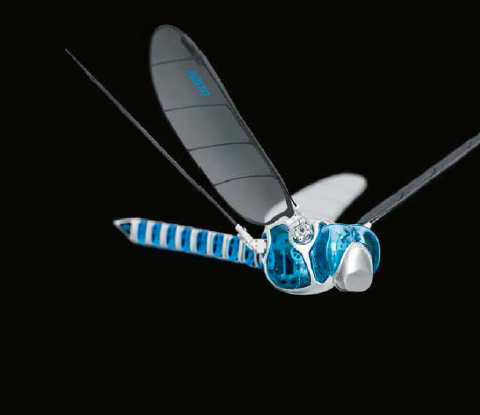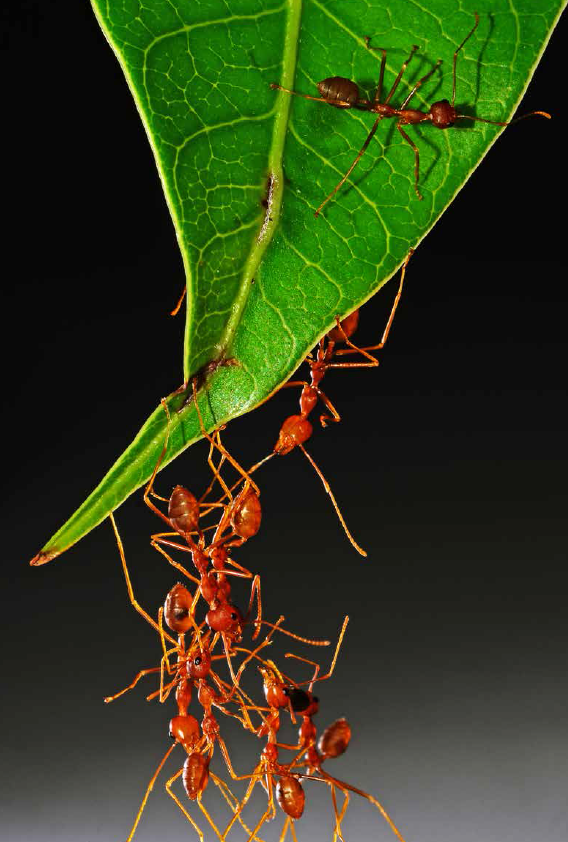The robot revolution is on the rise
In many production applications, automation is employed to carry out tasks such as gripping, moving and positioning objects, and, in some cases, controlling and regulating whole processes. These are all tasks that are also routinely carried out in nature. Ten years ago, German automation company Festo set up the Bionic Learning Network to study and learn from these natural phenomena.
The work the Bionic Learning Network is doing today is informing and shaping the development of automation practices and equipment that will be used in the factories of tomorrow. Future factories will utilise intelligent components that adjust, flexibly, to different situations. The most recent projects to come from Festo’s Bionic Learning Network have been designed to explore how individual systems can use communication to allow them to work together collaboratively to solve complex tasks. To understand this better, Festo engineers have studied ants and butterflies, looking at how swarming and cooperation work in nature. Applying what they have learnt, the engineers have developed two robotic projects - BionicANTs and eMotionButterflies.
Like their natural role models, Festo's BionicANTs work together under a set of well-defined rules. They communicate with each other and coordinate their actions and movements. Festo’s ants show how individual units can react independently to situations while also acting as an overall system through shared communication. Every action the ants take is based on a set of rules that have been worked out with modelling and simulations, before being turned into complex control algorithms that are programmed into their systems. There is no swarm hierarchy defined within the programming, and using the predefined rules each ant contributes to finding a solution through distributed intelligence.
The ants can tackle a problem, such as working together to move an object, for up to 40 minutes, before they have to link up to a charging station through connections in their feelers. They communicate with each other through radio modules embedded in their torsos, and they use a 3D stereo camera in their head to identify objects and their location. By using the camera and an optoelectronic sensor in their abdomen, each ant always knows its exact position.
It’s not just what the ants do, but also how they are made that is at the cutting edge of technology. Selective Laser Sintering (SLS), an additive manufacturing technique, has been used to create their bodies from a polyamide powder. Festo’s engineers have also combined the SLS with 3D Moulded Interconnect Devices (MID). The MID process attaches conductive tracks to the surface of the shaped body parts. It means no cables are required, and assembly is simplified, while also giving the BionicANTs their sinister appearance.
Festo’s eMotionButterfiles combine an understanding of the lightweight construction of insects, with that of coordinated flying behaviour, and they work, in part, thanks to an indoor GPS system and infrared cameras. The eMotionButterfiles feature highly integrated onboard electronics to replicate their natural role model as closely as possible. They can activate their wings individually and implement fast movements. To enable the butterflies to make different flying manoeuvres, they need to be communicating permanently. Each butterfly’s location is monitored by the radio and sensor technology it carries, working in combination with a guidance and monitoring system.
The indoor GPS, which is expected to become an integral part of many factories in the future, has a camera system at its heart. Ten infrared cameras installed in the space used by the butterflies, record them using infrared LEDs as active markers. The cameras transmit the position data to a central master computer, which acts as an air traffic controller and coordinates the butterflies. No human pilot is required to control the butterflies. Programmed routes are stored on the central computer. But, with the aid of behaviour patterns also stored, they are also able to move autonomously through the space in which they are operating.
These projects are by no means the first from Festo to draw inspiration from the animal kingdom. Earlier work from the Bionic Learning Network has been based on kangaroos, dragonflies and a host of other creatures. The BionicKangaroo was developed to recreate and learn from the jumping behaviour of the natural kangaroo. The project demonstrated how a kangaroo recovers and stores energy from a jump, and then retrieves it on the next leap. This study centred around the function of the Achilles tendon which was replicated with the help of an elastic band fastened at the back of the BionicKangaroo’s foot, parallel to a pneumatic cylinder on its knee joint. The artificial tendon cushions the jump, simultaneously absorbs the kinetic energy and releases it for the next leap.

Thanks to the use of laser-sintered parts reinforced with carbon, the artificial kangaroo weighs only 7kg. With a height of about 1m, it can jump up to 40cm high and a distance of 80cm. The BionicOpter is an ultralight flying object based on a dragonfly. It can fly in all directions and execute the most complicated flight manoeuvres. The ability to move each of its wings independently enables the BionicOpter to slow down and turn abruptly, to accelerate swiftly and even to fly backwards. This unique way of flying is made possible by lightweight construction and the way its functions are integrated.
The flapping frequency, amplitude and angle of incidence are all controlled by software and electronics; the pilot just has to steer the dragonfly with no need to coordinate the complex motion sequences. Festo’s Bionic Learning Network is doing some fantastic work but when you stop to think how it might evolve into the everyday practices, equipment and processes in the factories of the future it makes it even more amazing.
Festo has worked with Breakthrough funding, a company that helps UK SMEs achieve R&D tax credits - a government scheme created to enhance and reward innovation amongst UK businesses. Could you be eligible? Click here to learn more.
For more information, click here.











